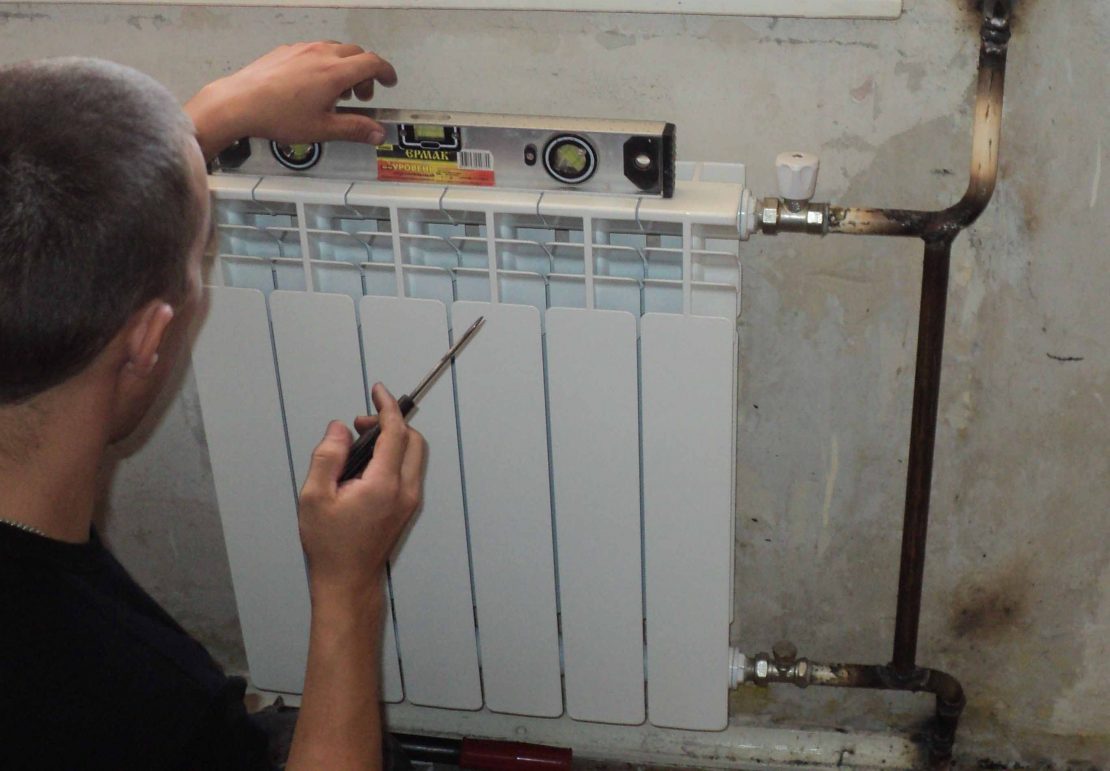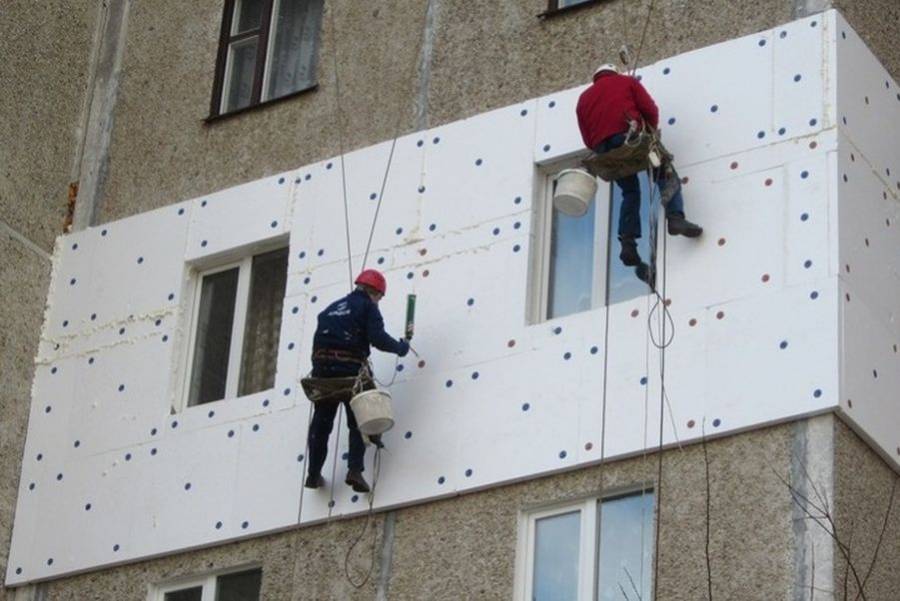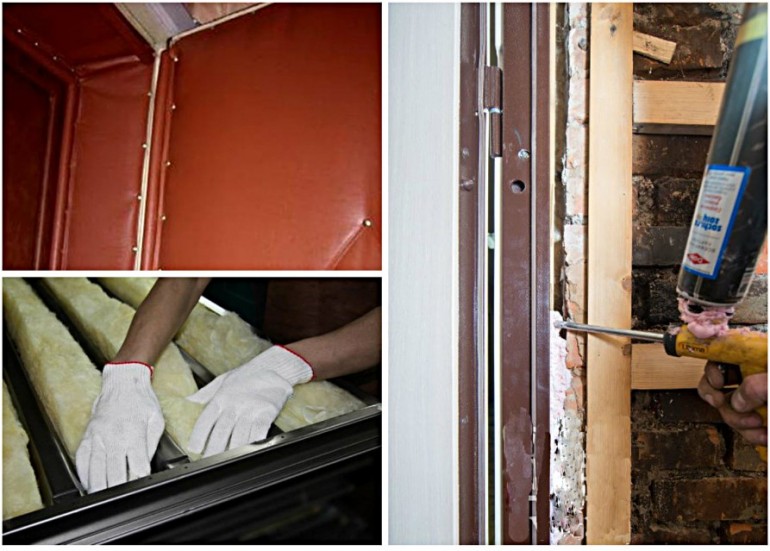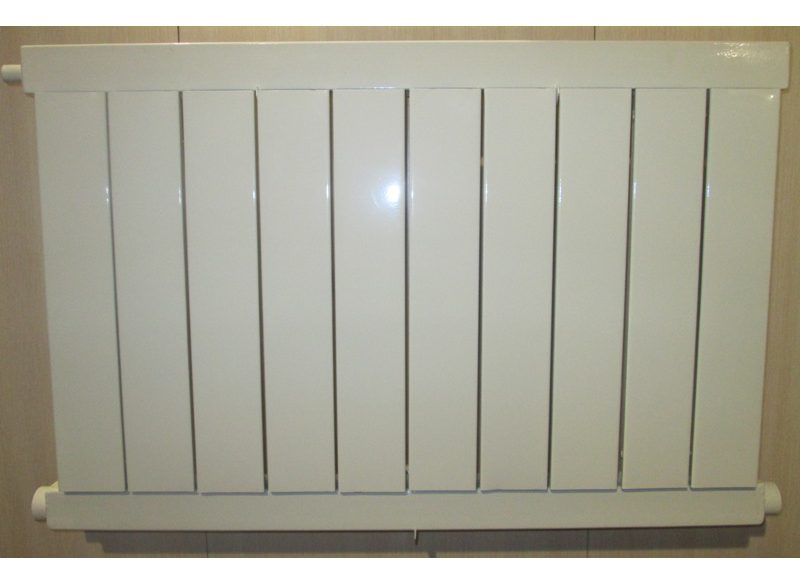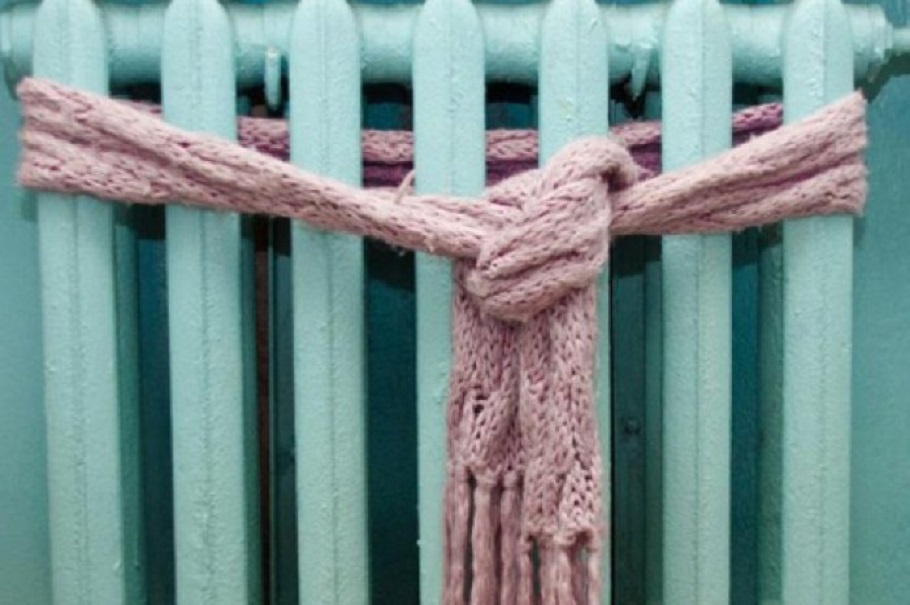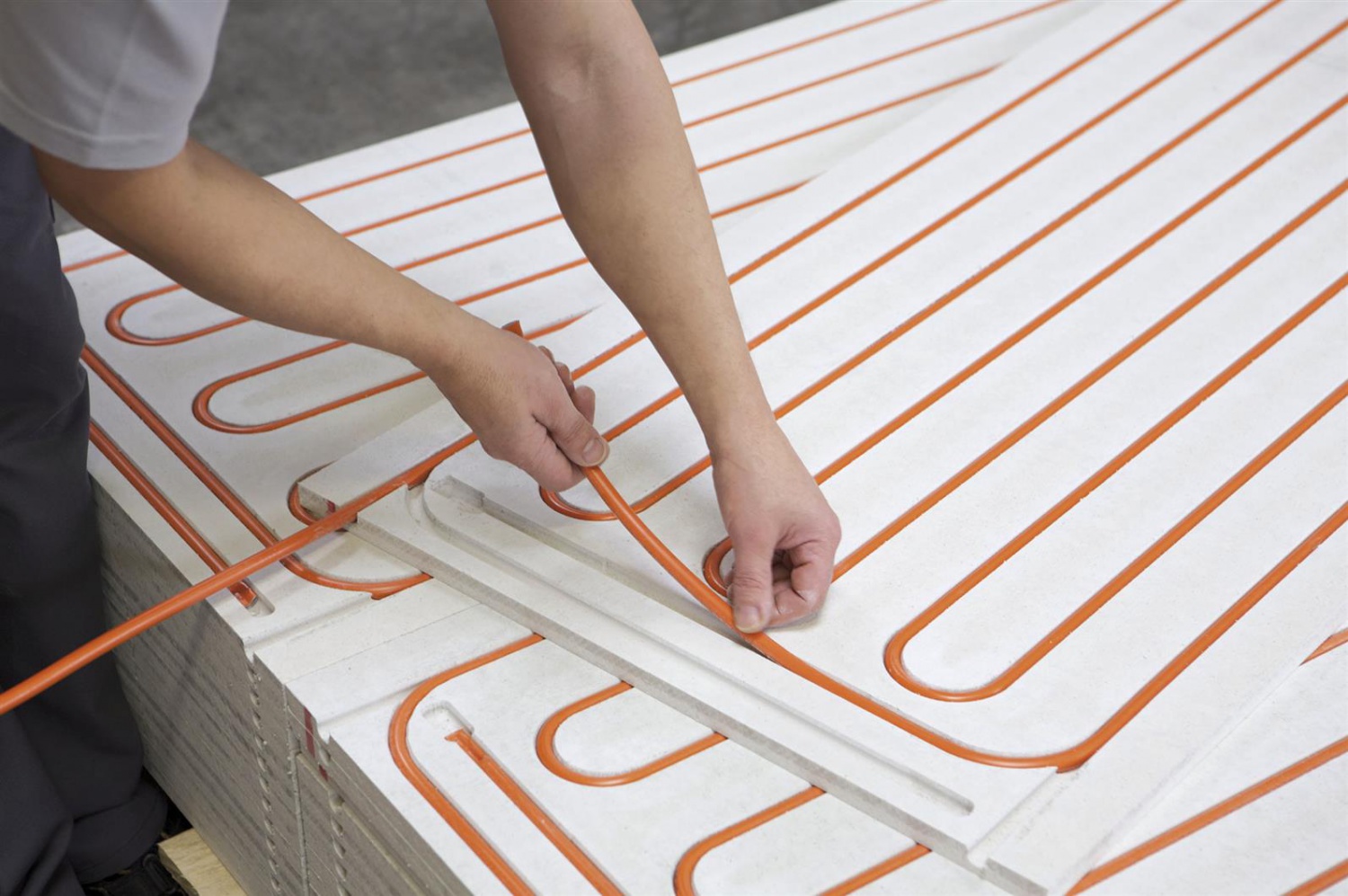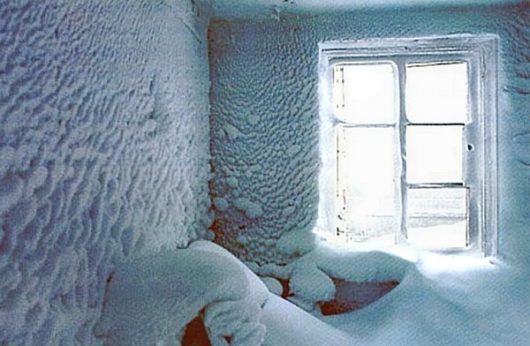The correct calculation of the heating system is one of the stages of its design. However, in addition to this factor, you should plan in advance for the installation of elements in each room. Depending on the chosen installation scheme, not only the appearance, but also the efficiency of the system will depend. To do this, the heating of the rooms should be done correctly: the calculation of radiators, how to close and hide the batteries and pipes.
- The procedure for arranging heating a room
- Methods for hidden installation of heating batteries
- Decorative screens for heating pipes
- Installation of radiators in the walls
- Installation of heating in the floor of the room
- Alternative ways to heat rooms
- Infrared room heating
- Induction or ionic heaters to the room
The procedure for arranging heating a room
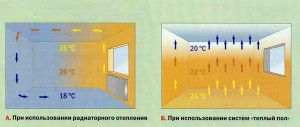
First, you need to calculate the heating per room. It consists in calculating the optimal amount of energy that would compensate for heat loss through the walls and windows of the room.
The simplest, but at the same time imprecise method is to use the ratio of the area or volume of the room to the optimal amount of required heat. Those. for a 10 m² room, you will need to provide 1 kW of energy. It is best to calculate the exact heat loss in the room and, based on this, calculate the number of heating radiators per room.
After that, it is necessary to carry out the following measures for the arrangement of heating:
- Draw up a layout of batteries and pipelines... It is recommended to hide the highways so that they do not affect the overall interior. There are many ways to close a heating pipe in a room;
- Choose a way to control the operation of radiators... It is best to install thermostats on each of them;
- If necessary - install additional heating systems... These include film underfloor heating, IR heaters, etc.
The above stages apply equally to both centralized and autonomous heating. The difference lies in the small degree of influence on the temperature regime of operation in the latter case. But how is a room heated by a central heating radiator under these initial conditions? To control the level of the coolant inflow into the battery, a bypass and a thermostat should be installed. In this way, it is possible to achieve a reduction in heating (at high temperature conditions). But at the same time, it is impossible to increase it.
It is recommended to install heating batteries in the place of the greatest heat losses - the outer wall and under the window structures. Then the cooled air will be heated and circulated in the room.
Methods for hidden installation of heating batteries
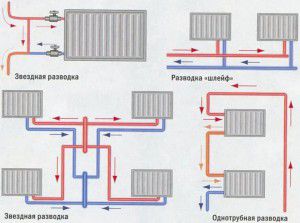
Having calculated the optimal number of radiators and sections in them, you can start choosing a wiring diagram for pipes. They are located depending on the general heating scheme. For the top wiring (single-pipe in apartment buildings), the supply lines are located vertically along the entire wall. The lower scheme is more convenient, since the supply and return pipes are located at the level of the plinth (5-8 cm higher than it).
How to hide a heating pipe in a room if it is installed vertically? To do this, you need to consider possible options for arrangement, which are distinguished by their laboriousness and the fundamental possibility of implementation.
Regardless of the chosen scheme for concealed installation of pipes, it is necessary to provide access to important nodes of the pipeline - the connection points of individual sections, shut-off valves, etc.
Decorative screens for heating pipes
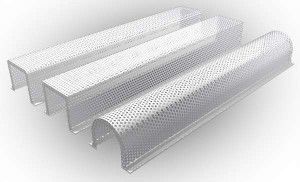
In practice, the question most often arises - how to hide the heating pipes in a room if they are already installed and it is impossible to change their location? To do this, you can make or purchase decorative boxes that hide the highways and improve the appearance of the room.
The advantage of using them lies in the minimum labor intensity of installation, as well as the ability to quickly carry out rebound and preventive maintenance. In addition, the following operational features of protective screens for pipes should be noted:
- There must be ventilation slots in the structure. They are necessary to prevent overheating of the pipelines. This is especially important for polymer structures;
- Before closing the heating pipe in the room, you should find out the minimum dimensions of the box. After installation, the distance from its inner surface to the highway must be at least 3 cm. Contact between the decorative structure and the highways is prohibited;
- Dismantling the box should be done quickly, without the use of tools.
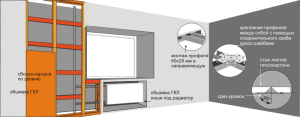
Factory models are most often made of steel, painted using powder technology. They consist of a frame on which the grille is attached. If such a closure of the heating pipe in the room is unacceptable from an aesthetic point of view, you can make decorative boxes yourself.
Depending on the chosen scheme, they can cover only the heating pipes, or completely the wall where the communications are located. The latter option is preferable for premises with a large area, where there is no shortage of living space.
When choosing the materials of the box, you cannot use flammable plastic. In addition, many of them can deform or lose their appearance under the influence of temperatures from + 60 ° C.
Installation of radiators in the walls
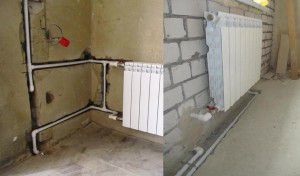
If there is no heating in one room, the hidden installation of highways is the best option. Most often, special channels are made in the wall for this. Pipelines are installed in them. In order to hide the heating pipe in a room in this way, it will take much more effort and a special tool. At the same time, certain rules for the manufacture of strobes must be taken into account:
- According to regulatory enactments, any deformation (including grooves) in the bearing wall is prohibited;
- It is possible to properly hide the heating pipes in a room in the wall only at a depth of no more than 25 mm. Otherwise, partial destruction of the wall is possible;
- The strobes are laid only horizontally or vertically. It is forbidden to do them diagonally.
Often, in an apartment building, it is more practical to close the heating pipe in the room than to perform such an installation. An alternative option is to install highways in the floor - the so-called radial piping. To work with reinforced concrete slabs, you must purchase special diamond-coated discs.
Installation of heating in the floor of the room
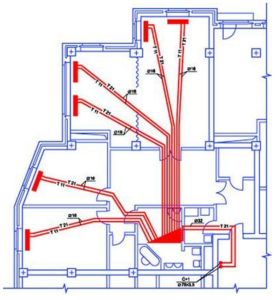
This is the most convenient way to hide the heating pipe in the room. It can only be carried out during repair work. After correctly calculating the number of heating radiators per room, you should choose their correct location. This is important as it will not be possible to relocate the batteries once the lines are installed.
It is possible to hide the heating pipes in a room according to this scheme only if the final screed has not been poured onto the floor. Pipes and collectors are installed on the rough surface, the tightness of the joints is checked.It is advisable to install additional protection on the pipelines - polymer shells.
The advantages of this scheme are as follows:
- The highways are not views, as they are hidden in the cake of the floor;
- Additionally, the concrete surface is heated, which is important for the first floor of a private house;
- Increased requirements for the quality of pipes and mounting elements. In the event of a break, it will be difficult to carry out repair work.
Despite the laboriousness - a similar method of hiding the heating pipe in the room is used for collector wiring.
Before choosing a method for closing the heating pipe, you need to make sure that the system parameters are saved. Those. after isolating the line, the operating temperature should not change.
Alternative ways to heat rooms
Along with the situations under consideration, the question often arises - what to do if there is no heating in one room? The best way to solve this problem is to install lines and radiators. If this is not possible, alternative ways of increasing the room temperature should be considered.
Infrared room heating

Currently, this is one of the most acceptable options for solving the issue of how to heat a room without heating. For this, you can use several types of heating systems: IR heaters, underfloor heating.
However, it should be borne in mind that the principle of exposure to infrared radiation is not in the convection of air currents, as occurs when a room is heated by a central heating radiator, but in the effect on the surface of objects. As a result, they heat up, which raises the room temperature.
Features of IR heating:
- Relatively high energy consumption compared to water heating;
- Low inertia. The heating of the room occurs relatively quickly, as well as the change in the power of the IR study;
- Possibility of using as an additional heating system.
The best option for the arrangement is the installation of an infrared film. To heat a room without heating, this is done in two ways - organizing a warm floor or installing it on the walls in the upper part of the room.
When calculating IR heating for a room, it must be borne in mind that heating elements cannot be covered with furniture or other interior items. This could lead to damage.
Induction or ionic heaters to the room

If the area of the room is quite high (from 20 m² or more), and there is no heating system as such, it can be made from modern induction or ionic boilers. They are small in size and energy efficient.
This way you can heat the room without district heating. However, this scheme has a number of features:
- An expansion tank and a safety group must be installed. The circulation pump should only be installed if the total volume of the heating medium exceeds 50 l;
- To reduce costs, the boiler is connected to the programmer;
- The correct calculation of the number of radiators per room is performed beforehand.
For the last point, you need to find out the heat loss in the room. The heat dissipation of the batteries must compensate for them, taking into account the lowest possible temperature in winter. The best way to calculate is an online calculator or a specialized program.
You also need to remember that heat from a room in a house can go to other rooms. Therefore, when choosing a method for heating it, it is necessary to take into account the internal air circulation in the building.
The video shows an example of a professional approach to the issue of hiding heating pipes:

